- More from Famously...
- Famous Arrests
- Famous Scandals
- Famous Brands
View information about Ernest Hemingway's death here on famously-dead.com. You can view information about Ernest Hemingway's death and other famous deaths. You can view by name or by cause of death. We also have included the most popular famous deaths.
Ernest Hemingway's Death
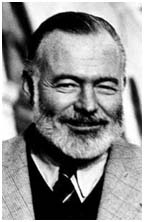
- Ernest Hemingway
- Novelist, Journalist
- July 21, 1899
- July 2, 1961
- Suicide
The life and death of Ernest Hemingway:
He was one of the best-known American writers of the 20th century, renowned for his economy of words, using the short punchy sentences he developed in his years as a journalist. Ernest Hemingway produced most of his work between the mid-1920s and the 1950s and won the Nobel Prize in literature in 1954.
Many of his works are considered American literary classics. Several were turned into movies. However, he was also a hard liver and a hard drinker and it all ended with a self-inflicted shotgun blast a few weeks shy of his 62nd birthday.
He was born Ernest Miller Hemingway…
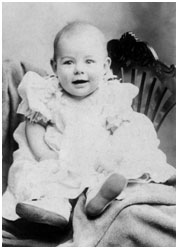
…and grew up in this house in Oak Park, Illinois…
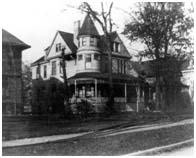
…a Chicago suburb. Ernest's father Clarence was a doctor and his mother was a musician. Both of them were well-educated and well-respected in their conservative neighborhood. Ernest said later in life that he disliked his first name and as an adult, claimed to hate his mother – partly because she forced him to take cello lessons.
As a boy, Ernest attended Oak Park and River Forest High School's and took part in a number of sports, like boxing, track, water polo, and football. He also excelled in English classes, foreshadowing his future successes.
After high school, Hemingway responded to a Red Cross recruitment effort and became an ambulance driver in Italy during World War I. His war-time experience formed the basis for his novel "A Farewell to Arms." In July, 1918 Ernest was seriously wounded by mortar fire but despite his injuries, he carried an Italian solider to safety and received the Italian Silver Medal of Bravery for his valor. He was still only 18.
Ernest returned home after the war and worked as an associate editor of a monthly journal Cooperative Commonwealth. He was later hired as a foreign correspondent for the Toronto Star and left for Paris.
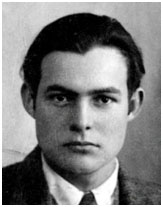
Before leaving on his assignment, he married Hadley Richardson and took her to Paris with him.
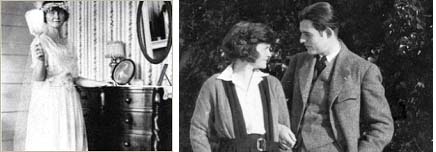
They had a son, John, born in October, 1923.
Ernest and Hadley visited the Festival of San Fermin in Pamplona Spain in 1923 and he was hooked on bullfighting. A few days after the fiesta ended, he started working on what would become "The Sun Also Rises."
However, his marriage was falling apart and in the spring of 1926, Hadley became aware of his affair with Pauline Pfeiffer. Ernest and Hadley divorced in January, 1927 and Hemingway married Pauline in May of that year.
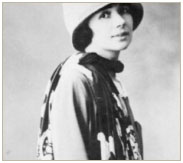
Pfeiffer was from a wealthy Arkansas family who were Catholics, and Hemingway converted to Catholicism before the wedding. In the spring of 1928, Ernest was scarred for life in Paris when he though he was pulling on a toilet chain and pulled a skylight down on his head – leaving a mark on his forehead.
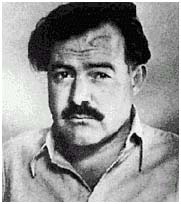
Ernest and Pauline traveled to Kansas City with their son Patrick, who was born in June, 1928. Pauline's difficult delivery was fictionalized by Hemingway when he wrote "A Farewell to Arms."
The family moved around after that – Wyoming, Massachusetts and New York. In the winter, Ernest was devastated to learn that his father committed suicide, and commented that he'd probably go the same way.
During the early 1930's, Hemingway took up hunting deer, elk and grizzly bear in Wyoming. A third son, Gregory, was born in November, 1931 in Kansas City. A 1933 African safari provided the basis for the short story "The Snows of Kilimanjaro."
In 1937, Hemingway agreed to report on the Spanish Civil War for the North American newspaper alliance. That's where he met Martha Gellhorn.
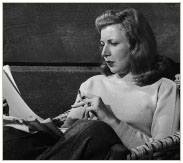
Martha was like first wife Hadley, in that she was a native of St. Louis. And like second wife Pauline, she'd worked for "Vogue" in Paris. (You can see where this is going.) After Hemingway's divorce from Pauline was finalized he and Martha were married November 1940 in Cheyenne, Wyoming. They summered in Ketchum, Idaho and spent their winters in Cuba.
Gellhorn provided the spark for Hemingway's most famous novel "For Whom the Bell Tolls", published in October 1940 and nominated for a Pulitzer Prize.
With World War II underway, Ernest was in London and other parts of Europe from May 1944 to March 1945. He met Time magazine correspondent Mary Welsh in London, and fell for her.
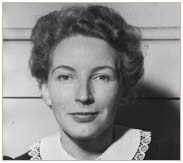
He proposed marriage on their third meeting. When the divorce from Martha was complete, Mary became his fourth wife in 1946, and remained his spouse until he died.
Ernest wrote "The Old Man and the Sea" in eight weeks and won the Pulitzer Prize for it in May, 1954. In October of that year, he was awarded the Nobel Prize in Literature.
However, nothing seemed to come easy. The Hemingway's were involved in a series of accidents – involving cars and skiing. In 1954, Ernest and Mary were involved in two successive plane crashes. Ernest booked a sight-seeing flight over the Belgian Congo as a gift to Mary. The plane clipped a utility pole and crashed. Hemingway had head injuries. Mary broke two ribs. A newspaper headline incorrectly reported they died.
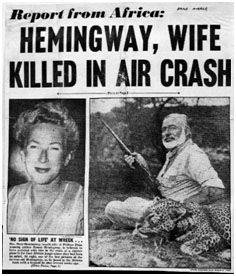
The next day, trying to reach medical care, they were on a second plane that exploded on takeoff. Hemingway suffered burns and another concussion. When they arrived in Entebbe, Hemingway found reporters who were covering his death! He was still alive, but the crashes left him in pain and contributed to his poor health for much of the rest of his life.
Between late 1955 to early 1956 Hemingway was bedridden, told by his doctors to stop drinking to stop the damage to his liver. He tried to follow the advice, but then went back to his old ways and was suffering from liver disease, high blood pressure and arteriosclerosis.
Here's a recording of him in the late '50's
By the early 1960s, Ernest had become depressed and was going through electro-convulsive therapy as many as 15 times in December, 1960 at the Mayo Clinic in Rochester, Minnesota.
In April 1961, Mary found Ernest holding a shotgun one morning.
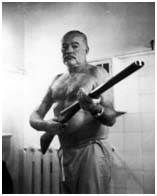
He was sedated, taken to a hospital and then returned to the Mayo Clinic for more shock treatments.
Released from the hospital in late June, Ernest went home to Ketchum. In the early morning hours of July 2, 1961, Hemingway deliberately shot himself with his favorite shotgun, putting two shells in the 12 gauge weapon, placing the barrel in his mouth and pulling the trigger. The initial story for the press was that it was an accident.
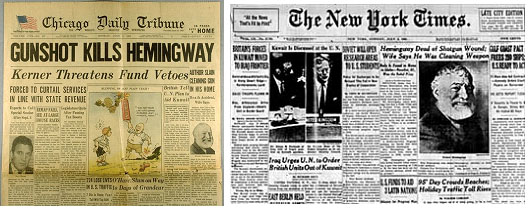
His family flew to Ketchum for his funeral.
He's pictured here with his three sons (left to right Patrick, Jack and Gregory), in Cuba around 1945.
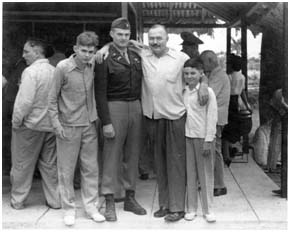
A Catholic priest officiated, thinking Hemingway's death was accidental. Five years later, Mary Hemingway admitted Ernest committed suicide.
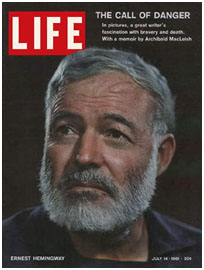
He's buried at Ketchum Cemetery in Ketchum, Idaho.
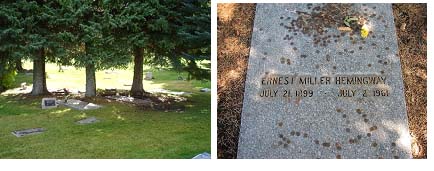
To this day, Ernest Hemingway is remembered as a great American writer, for his hard and lean writing style. Many of his novels were also made into major motion pictures. Here are trailers and clips from Hollywood's treatment of Hemingway's stories.
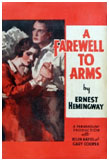
"A Farewell to Arms" was a semi-autobiographical story about a romantic love affair between an American ambulance driver and an English nurse in Italy during World War I. It was made into a 1932 movie starring Gary Cooper and Helen Hayes.
"For Whom the Bell Tolls" told the story of an American who's involved in a mission to blow up an important bridge during the Spanish Civil War.
Hemingway picked Gary Cooper and Ingrid Bergman for their roles in the 1943 film version of his story.
Hemingway's novel "The Sun Also Rises" was adapted to film in 1957, much of it filmed on location in Spain and France.
And Hemingway's novella "The Old Man and the Sea" was turned into film in 1958, with a screenplay that stayed very close to the original writing.
Spencer Tracy was nominated for a Best Actor Oscar for his role in this film.